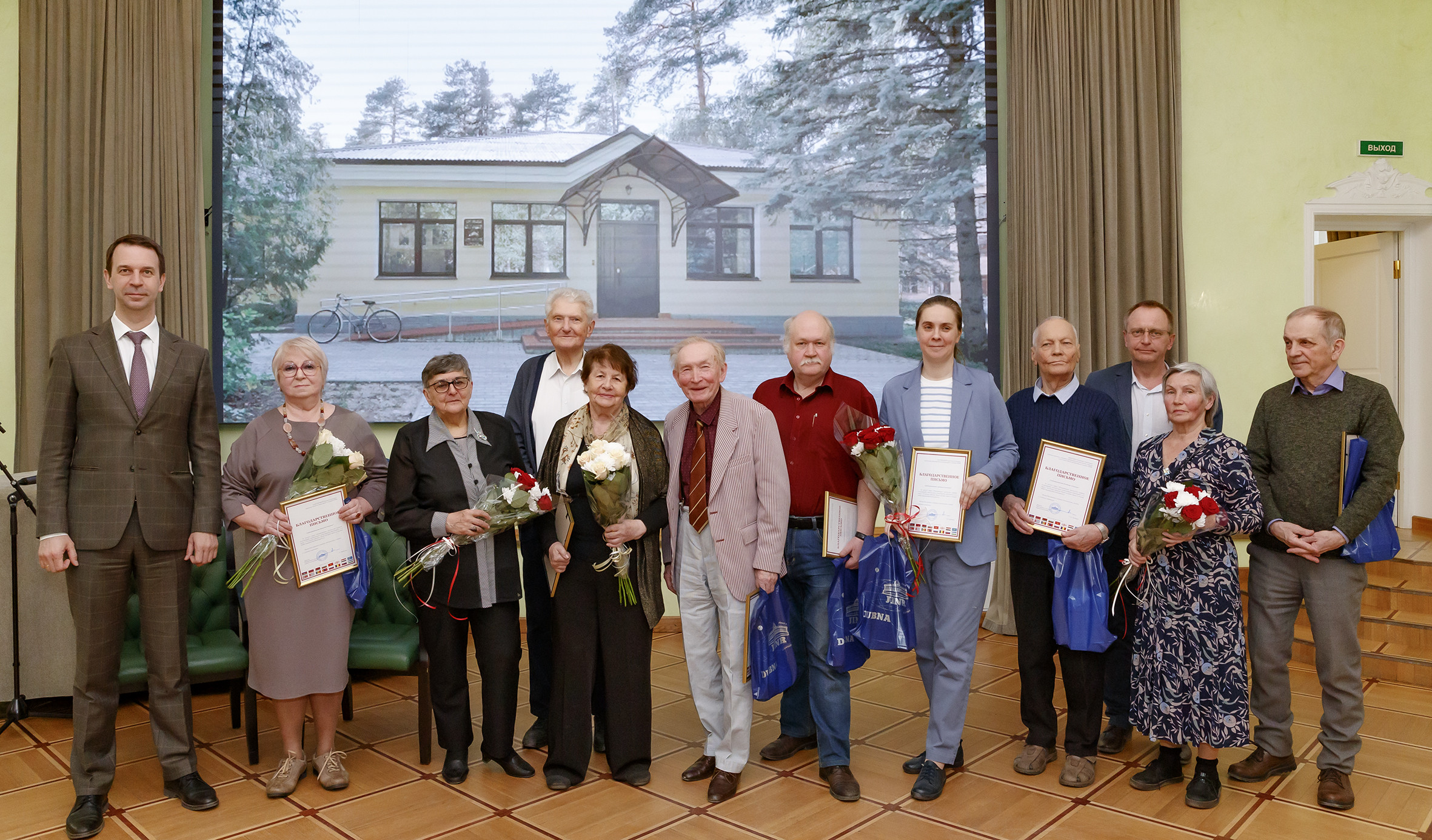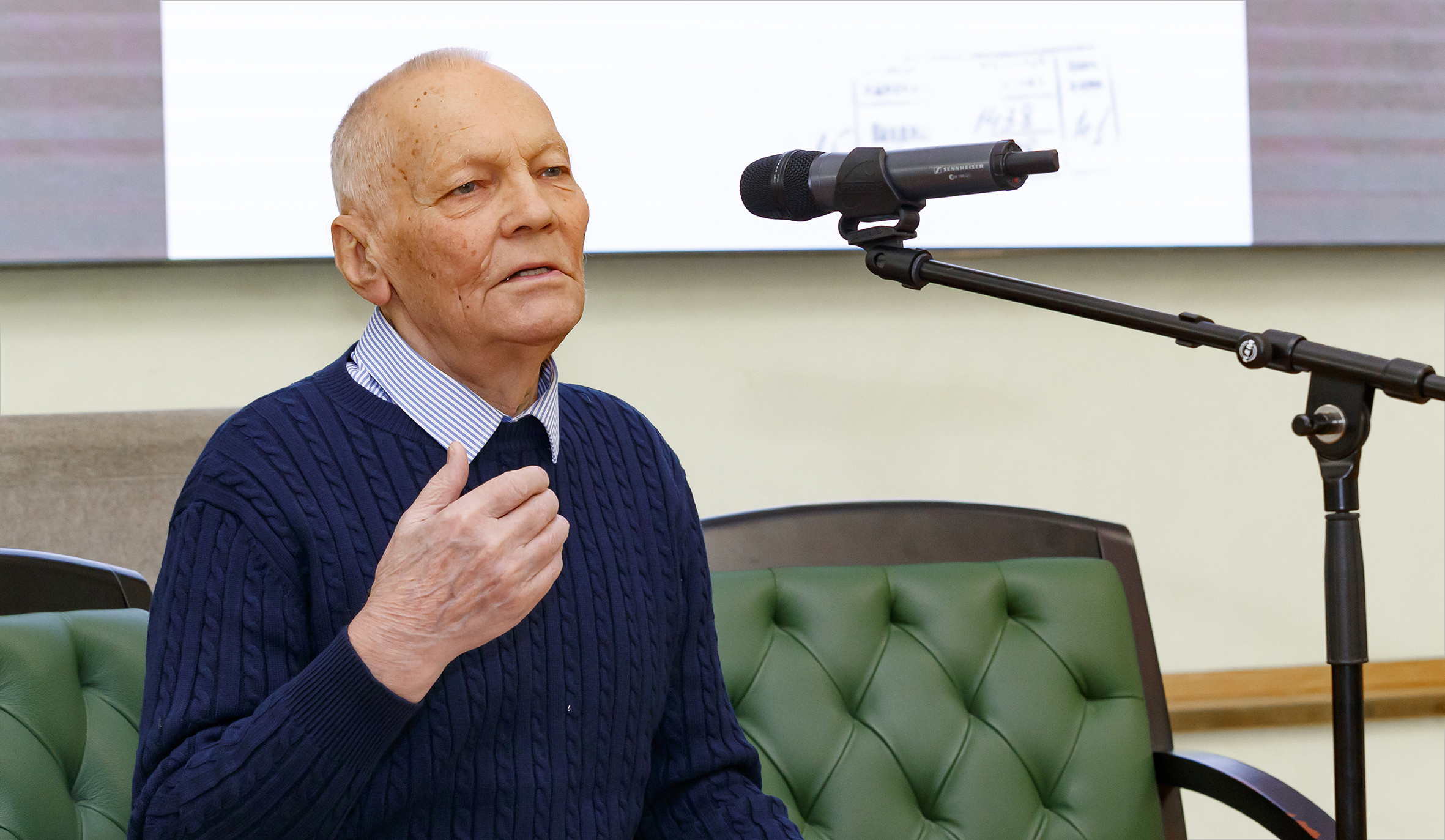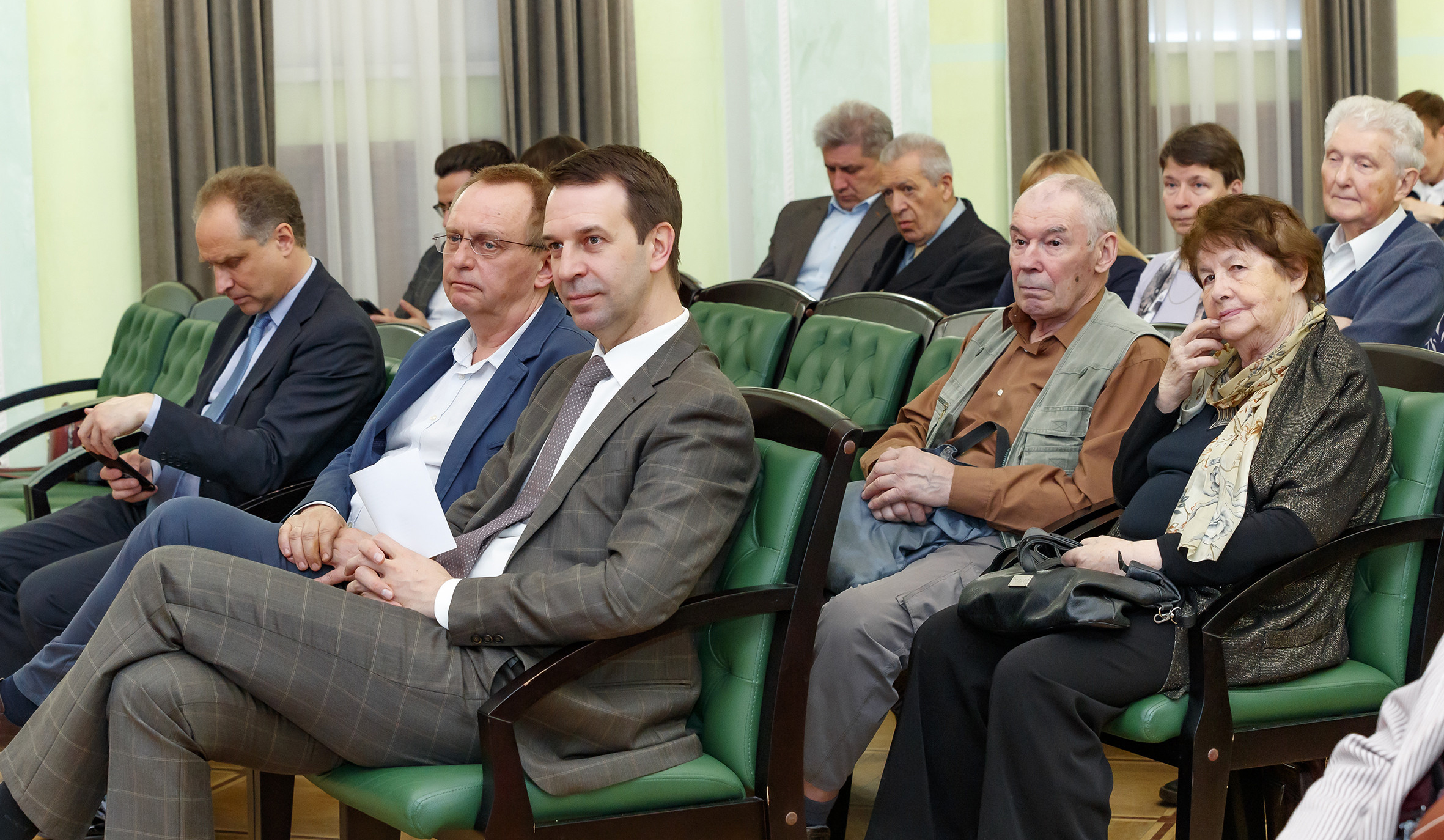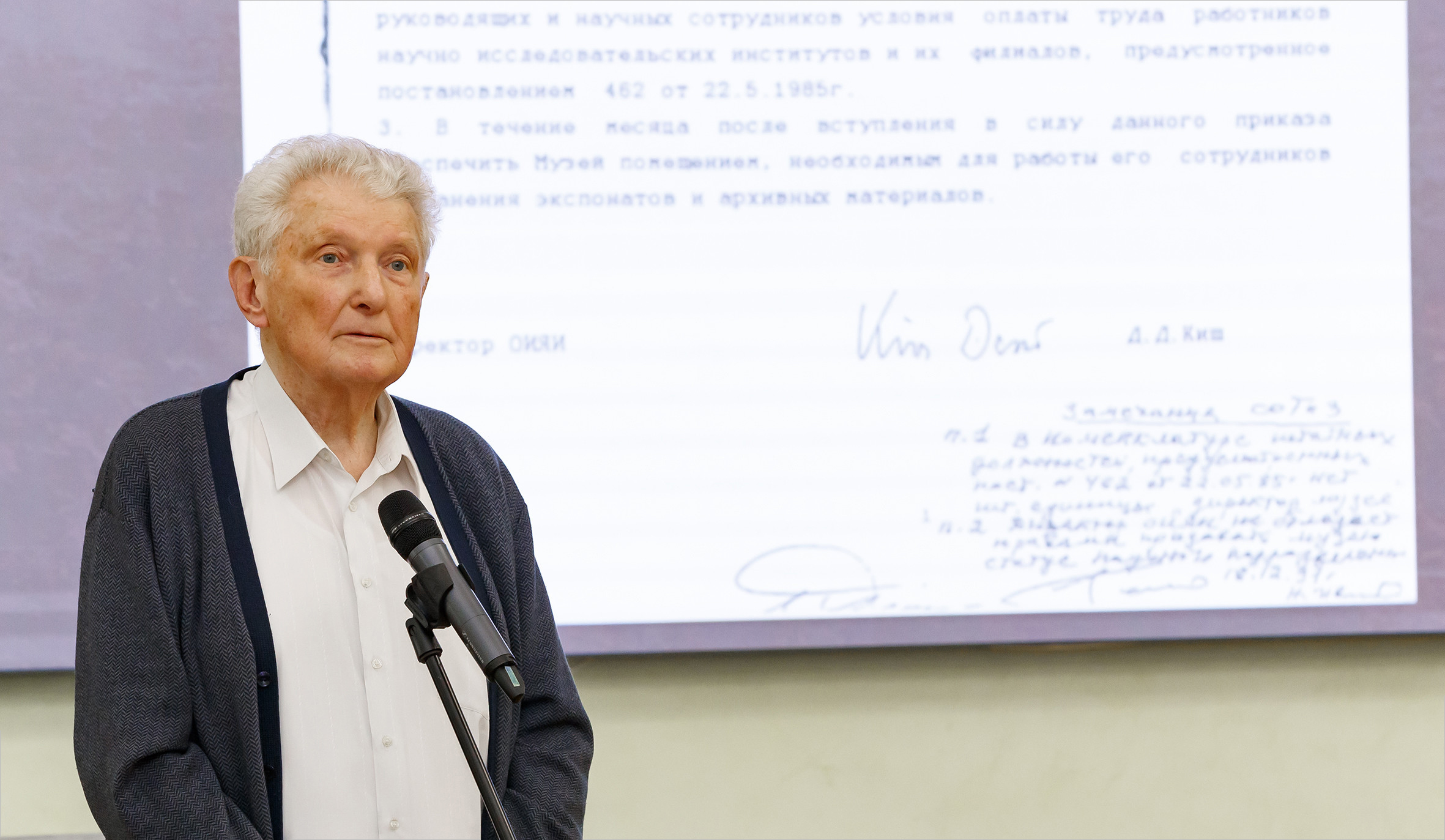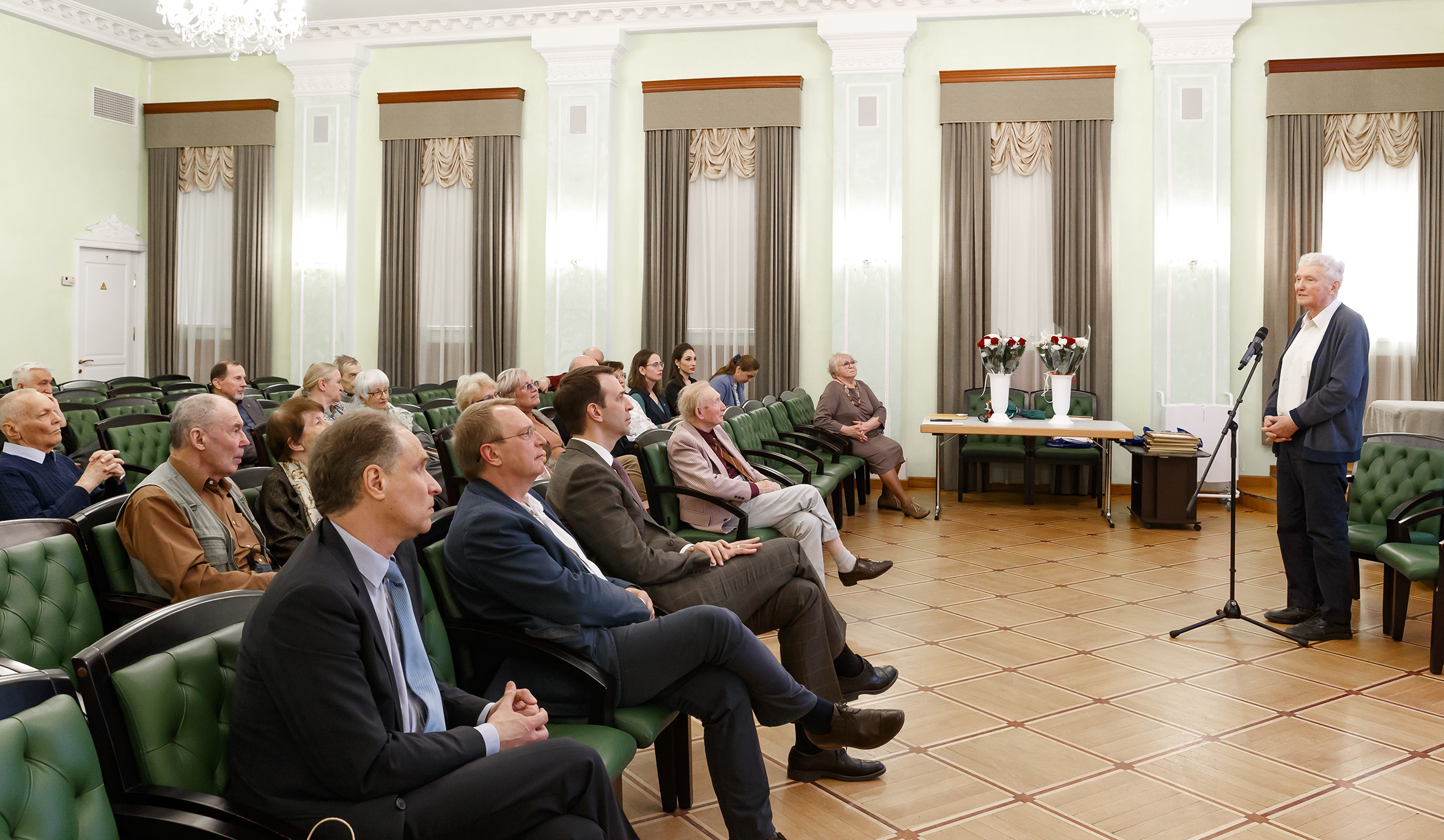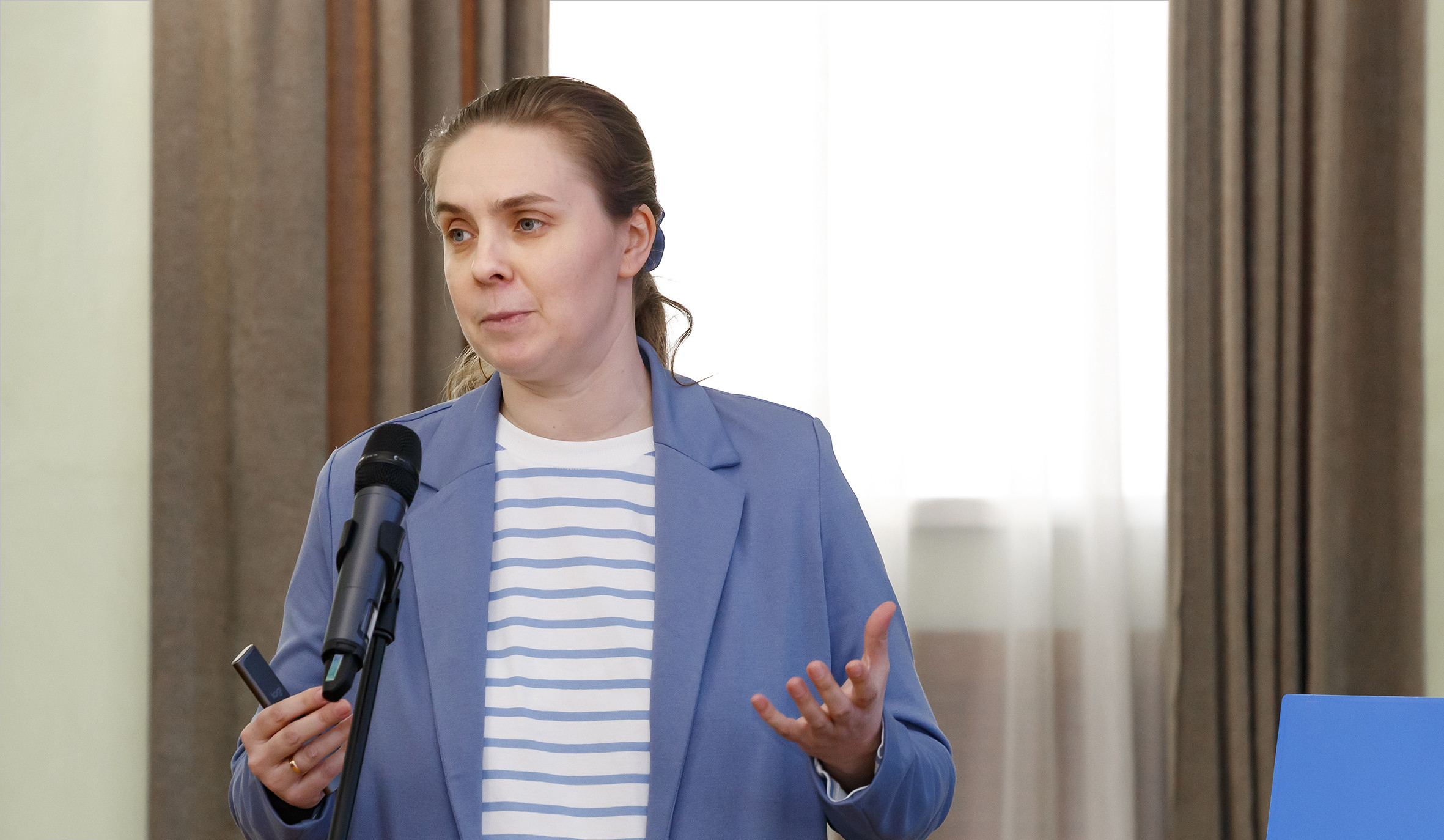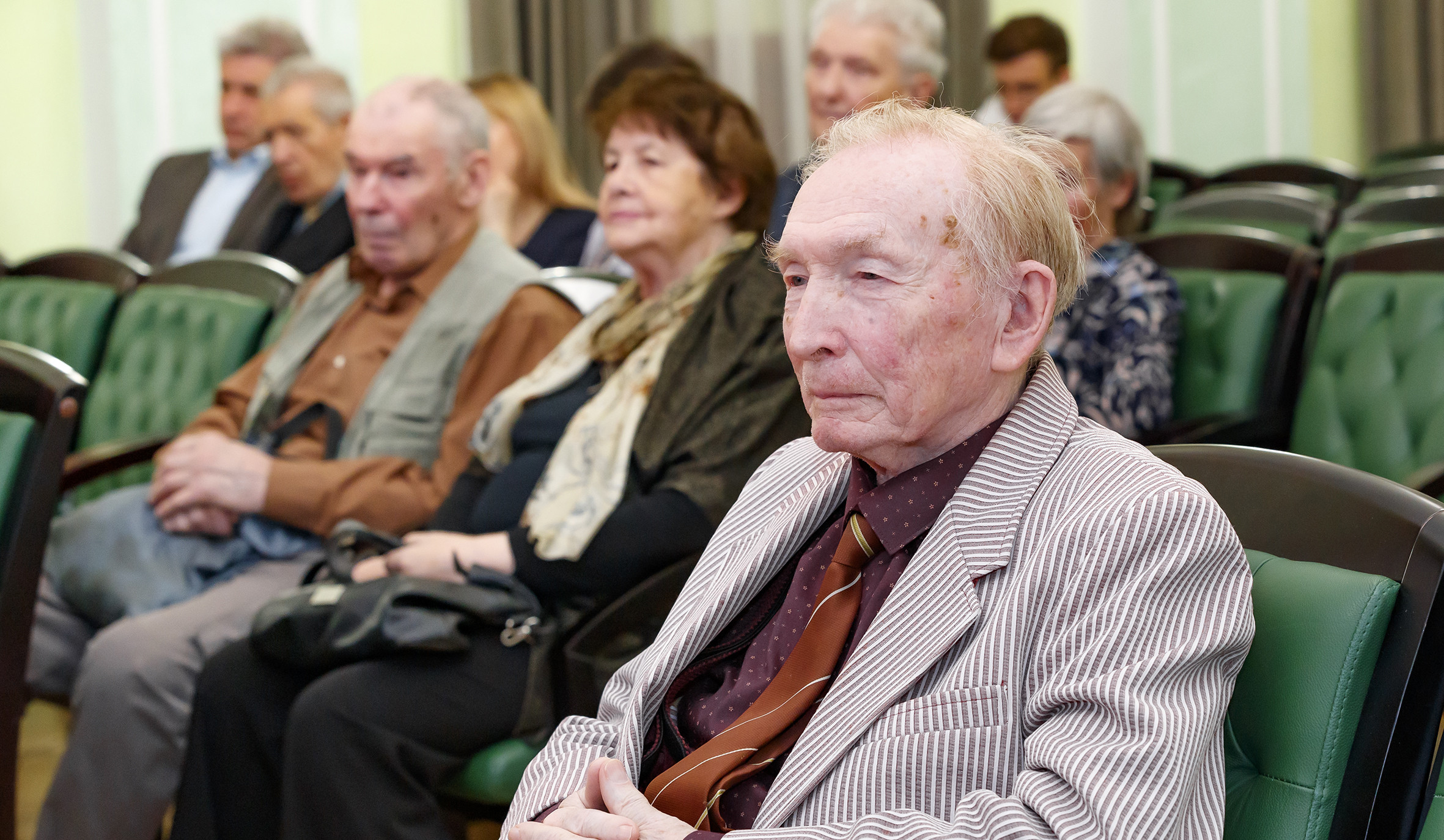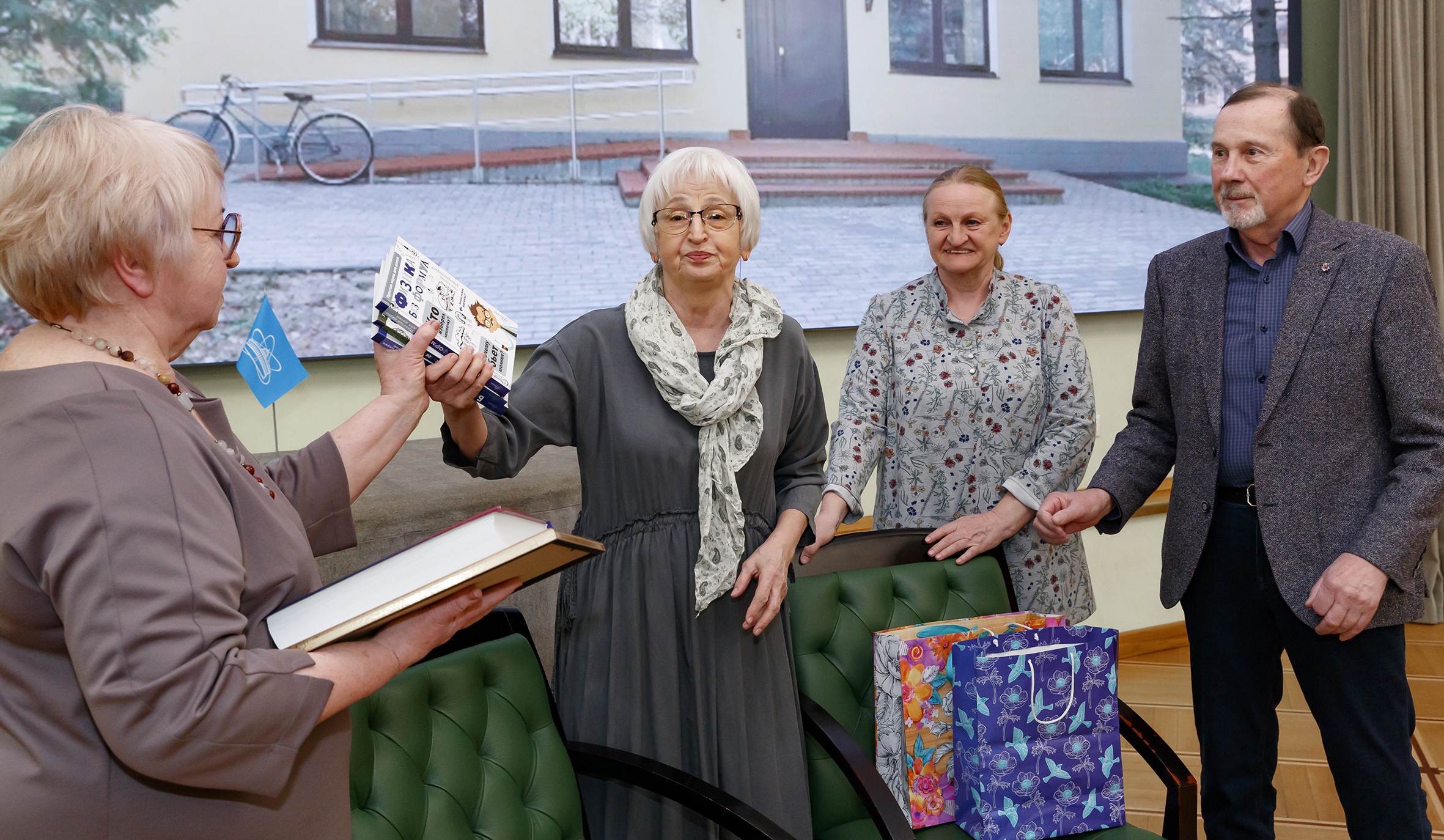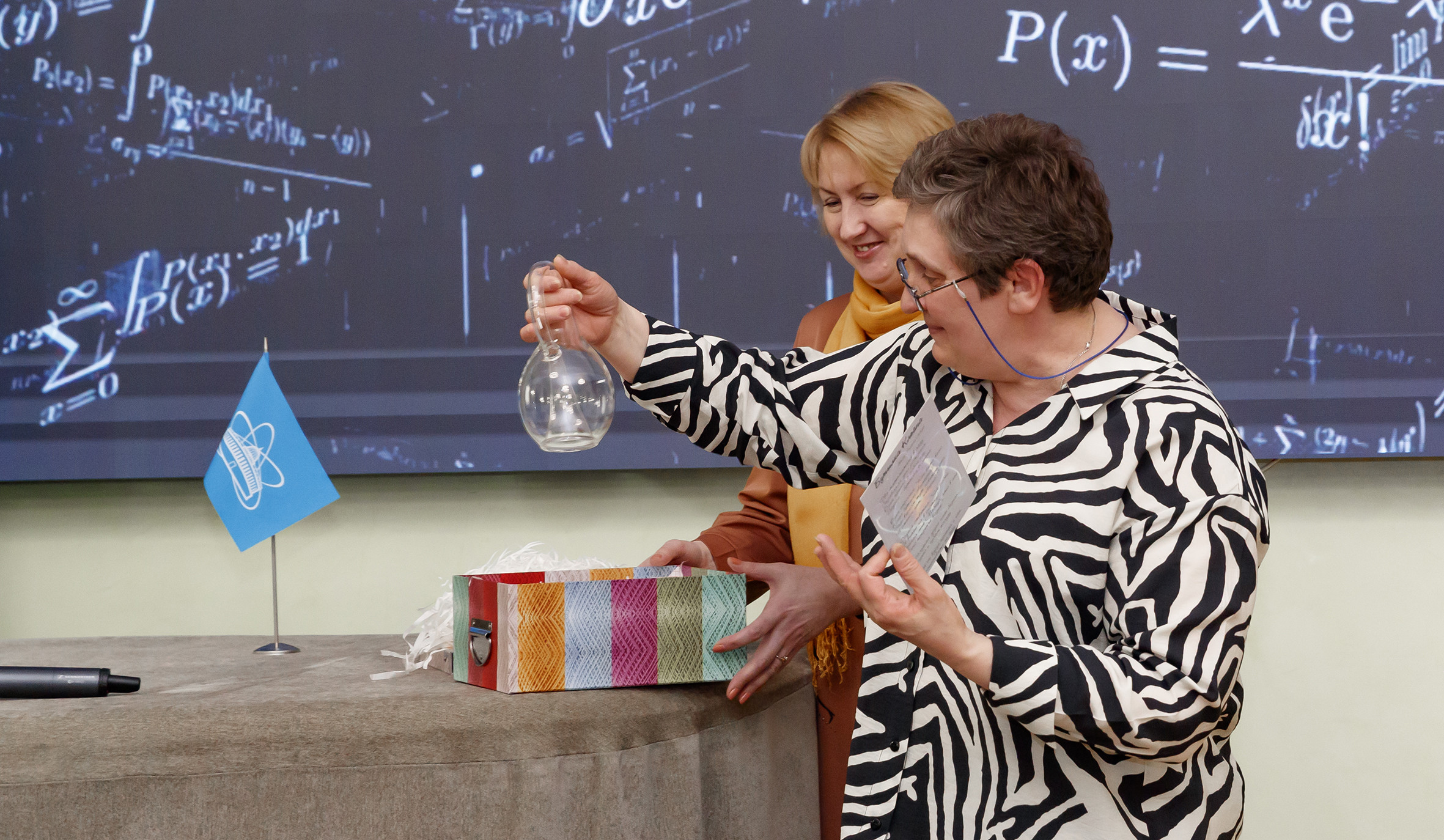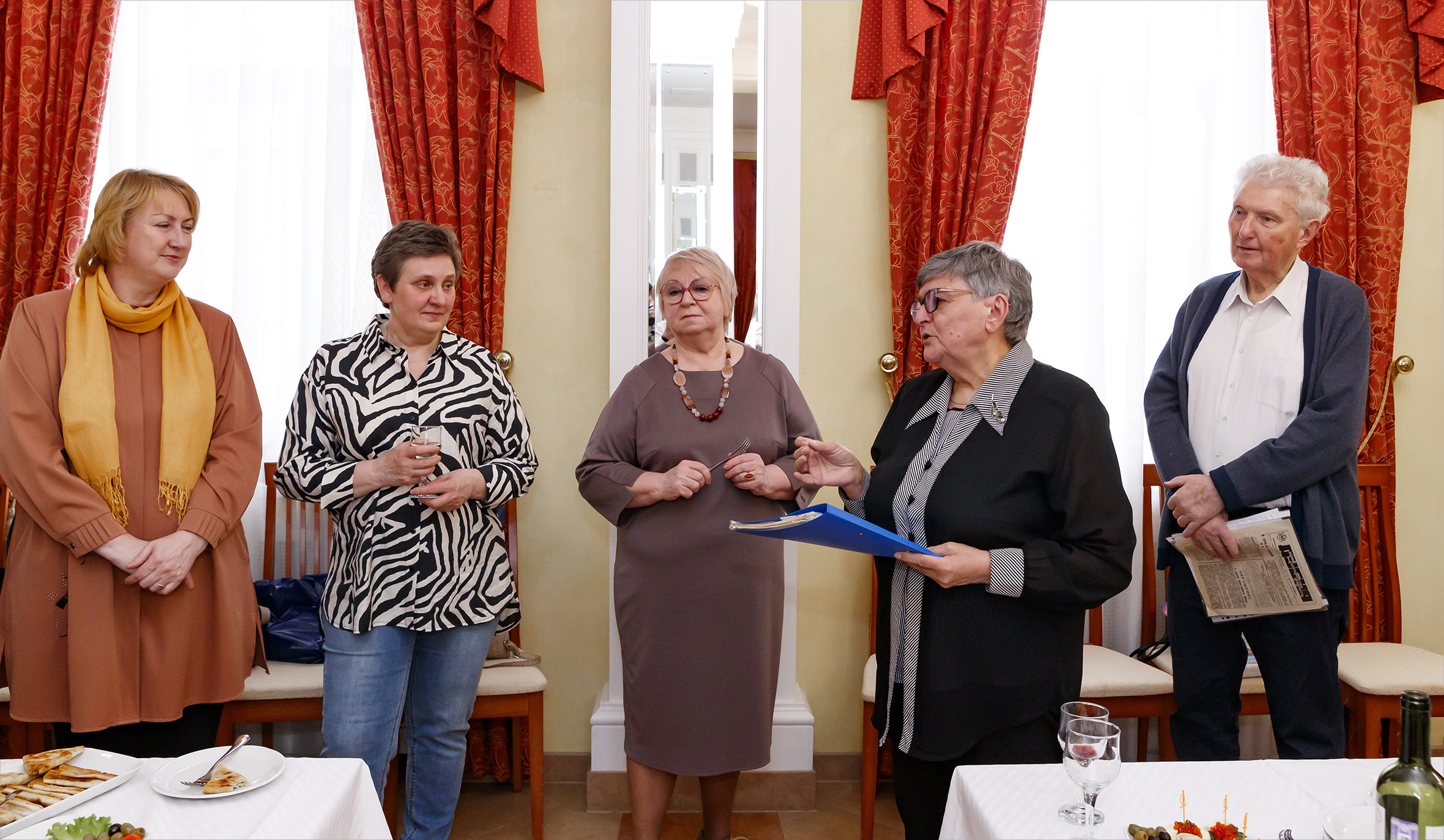Institute’s history carefully preserved for thirty years
News, 19 April 2023
On 19 April, the JINR Scientists’ Club hosted the celebration of the anniversary of the JINR Museum of Science and Technology. The Museum has done and continues to do a lot to preserve the memory and popularise science. For thirty years, the Museum staff has been carefully preserving scientific artefacts of the past, as well as the memory of discoveries, scientific facilities, and the role of scientists in their development and formation. The Museum hosts many educational events, many of which are dedicated to the mission to interest children in science.
The need to create an institutional museum at JINR appeared in the mid-80s. Some major scientific projects were becoming history. With the development of automation of physical experiments, many devices were becoming a thing of the past.
The founders shared their memories of the history of the Museum’s creation. Among them are Museum Director Nadezhda Kavalerova; head of the initiative group of JINR employees that came up with the idea of founding the Museum Vladimir Nikitin; adviser to the Museum Director, former Museum Director Heinrich Vardenga; Chairman of the JINR Museum’s Council, an FLNP JINR chief researcher Evgeny Shabalin.
A lot of preparatory work preceded the organization of this unscientific department. “1988 can be considered the first milestone. Thirty-two years of JINR: 31 discoveries were registered in the USSR list of discoveries, a large amount of research was done, unique facilities were created. Back then a heated discussion about the need to create an Institute Museum unfolded on the pages of the JINR Weekly Newspaper,” Vladimir Nikitin said.
In the 80s, an initiative group of the Institute’s staff gathered. It developed a draft regulation on the Museum agreed with the Ministry of Culture of RSFSR in November 1988. The Polytechnic Museum provided significant support during the formation period. Its Director Gurgen Grigoryan and the heads of the JINR Laboratories wrote letters to JINR Director Nikolay Bogoliubov in support of the foundation of the Museum. Representatives of all the laboratories of the Institute formed the Museum Council.
The Committee of Plenipotentiary Representatives of the JINR Member States made the decision to establish the JINR Museum on 16 – 19 January 1989. Nikolay Bogoliubov issued the order on 3 February the same year. In fact, the Museum appeared in 1993, when two rooms were given for these purposes in the building of the editorial office of the JINR Weekly Newspaper “Dubna: Science, Community, Progress”. 13 March is the official day of the Museum’s foundation. It’s the day when the Museum’s first exhibition “JINR Achievements” was opened in Moscow. The exhibition comprised exhibits collected in all the Laboratories of the Institute, as well as photographs by a JINR photographer Yuri Tumanov. The exhibition ran for two months and attracted many visitors. As Nadezhda Kavalerova noted, the exhibition was held at the Polytechnic Museum, which at that time was the flagman. All the museums related to science and technology kept up with it.
The Museum’s exposition continues to obtain new artefacts even now. Deputy Director of the Museum Anastasia Zlotnikova presented the Museum’s current projects and asked the Institute’s staff not to throw away old tools in Laboratories, but first offer them to the Museum as exhibits.
Now the Museum has four small halls, namely the JINR history hall, the hall of new projects, the “Classroom laboratory”, and the lecture and exhibition hall. Guided tours are free for everyone, including in English. The JINR Museum has a Club of future scientists for children from 1 to 6 grades. It is at this age that children are most willing to join science. “It is important that children learn here what their parents and grandparents do at work,” Anastasia Zlotnikova said.
The “Mendeleev readings”, a scientific and practical conference for schoolchildren, is organized annually. Quizzes are held regularly, JINR employees carry out scientific experiments. The project “Classroom lessons in the Museum” dedicated to various sections of physics, according to the school curriculum, continues on an ongoing basis.
Judging by guest book entries the geography of visitors to the museum is extensive. It consists not only of schoolchildren and students. Physicists, biologists, teachers, engineers, journalists, as well as gasifiers, machine tool builders, patent specialists visit the Museum… Visitors from all over Russia come here. Among the representatives of other countries are citizens of the JINR Member States, countries of Eastern and Western Europe, Bangladesh, Cameroon, China, Israel, Mexico, New Zealand, Nigeria, South Korea, Sri Lanka, the USA.
In addition, there are events for adults dedicated to memorable dates, namely historical and scientific seminars, seminars “Personalities of the Institute Dubna”, popular science lecture hall “Accessible science”. The Museum staff helps in the work of the memorial offices of the JINR founders.
“Your inspiration and dedication to this important activity amaze me. When you get inside the Museum and see new spaces it offers, you realise one thing. This is a kind of collapsed Universe, and inside it there is a large number of dimensions, each of which unfolds in its own way for different visitors, namely for children, high school students, representatives of different professions. Our Museum has been operating for thirty years. Visitors and experts who come to us admire it,” JINR Director Grigory Trubnikov said.
Grigory Trubnikov read out congratulations to the Museum from Director General of the Polytechnic Museum Dmitry Kozhanov and presented letters of thanks to the staff, namely Museum’s Director Nadezhda Kavalerova, Deputy Director of the Museum Anastasia Zlotnikova, a curator Kirill Kozubsky, Advisor to the Director of the Museum Henry Vardenga, a leading methodologist Alexander Rastorguev. Members of the Museum Council, namely Chairman of the Council, an FLNP JINR chief Evgeny Shabalin, consultant at the DLNP JINR Directorate Tatyana Blokhintseva, a BLTP JINR leading researcher Leonard Malov, Valentina Efimova, an FLNP JINR leading researcher Alexander Strelkov, received letters of thanks.
“A museum is a temple from which a person comes out enriched with knowledge and feelings. Its functions are to store, multiply, and distribute all the best and valuable things created by human labour and talent,” Vladimir Nikitin summed up.
